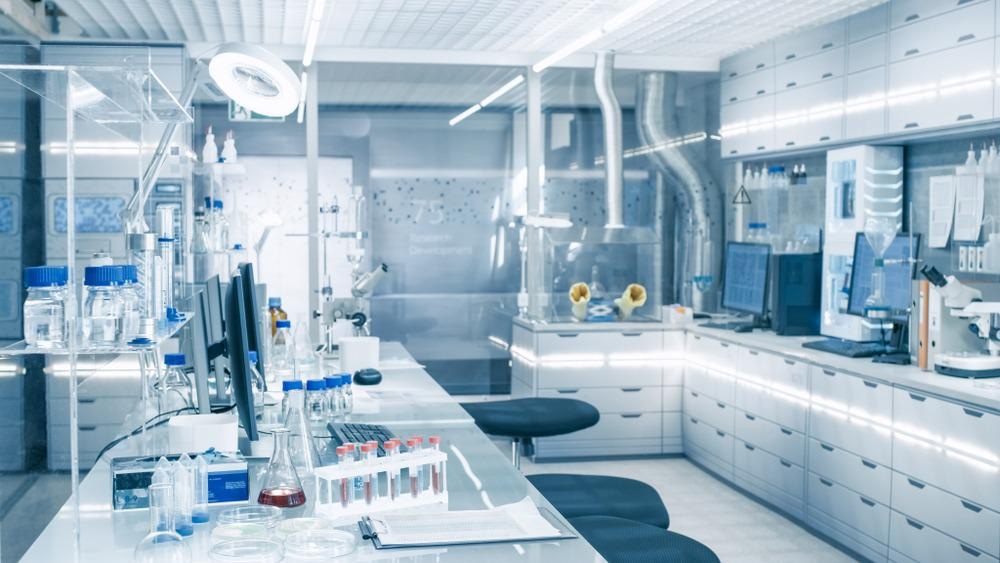Scientists have reported the development of a non-powered hydrogel water pumping mechanism utilizing diurnal temperature variation. The study, which has been published in the journal Applied Materials Today, has been conducted by researchers from the Department of Chemical Engineering and Material Science at Chung-Ang University in the Republic of Korea.

Study: Water-pumping and purifying hydrogels driven by diurnal temperature variation. Image Credit: Gorodenkoff/Shutterstock.com
Diurnal Temperature Variation
Diurnal temperature variation is an essential but underappreciated factor that makes life possible on Earth. This natural phenomenon has been utilized extensively in the viniculture industry, with vineyards located in high-altitude locations which have significant differences in daytime and night-time temperatures. The phenomenon is caused by the daily rotation of the Earth, and an imbalance between terrestrial and solar radiation.
Desert regions typically display the greatest diurnal temperature variation, with low-lying humid areas displaying the least variation. The potential use of this natural phenomenon as an energy source has largely gone unexplored.
Exploiting this Phenomenon in Phase-Change Materials
Phase-change materials are a relatively recent innovation in materials science research. Few phase-change materials which exploit diurnal temperature variations have been reported recently, with preliminary studies demonstrating the potential of these materials.
Functional phase-change materials which incorporate twisted carbon nanotube yarns have been developed for energy conversion applications. Whilst promising, they are hindered by slow actuating speeds. Other materials have been developed by combining phase-change materials with thermoelectric devices for electrical energy generation.
These devices have achieved the generation of 350 mV with a diurnal temperature variation of 10 oC, but whilst they can theoretically outperform pyroelectric conversion devices for converting thermal fluctuations into electrical energy, their applications are currently mostly limited to sensors.
Another potential application for phase-change materials which exploit diurnal temperature variation is non-powered water management. Water pumps and purifiers can be developed using this approach which do not require external energy input, providing significant energy savings and improving the sustainability of industries such as farming. Within agriculture, vertical farming has been explored in recent years to meet future food security, and this technology could benefit these efforts.
Vertical farming is less sensitive to fluctuations in climate change and desertification. Land usage can be reduced, the risks presented by pests can be mitigated, and less water and fertilizer are required in vertical farms. Hydromembranes, which are a combination of hydrogels and membranes, offer the potential for soilless farming. In the future, these methods could even be applied in off-world locations to improve the self-sufficiency of space exploration and bases on other celestial bodies.
The Study
Saving operational costs and energy are essential for the success of vertical farms, and research has focused on low-cost and energy-efficient devices. Developing unpowered components for vertical farms will provide companies and farmers with significant benefits.
The authors behind the study have developed an innovative solution that works based on diurnal temperature variations. In the research, thermo-responsive hydrogel-based water pumps and purifiers have been evaluated. These novel unpowered devices can be directly attached to vertical farming hydromembranes, reducing energy use and operational costs.
To the author’s knowledge, developing thermo-responsive hydrogels that exploit diurnal temperature variations has not been reported in the current literature, making their solution a truly novel one. Thermo-responsive hydrogels respond to temperature variations by undergoing volume changes, expanding and contracting depending on the external temperature. The macromolecular chains in these materials display a low critical solution temperature behavior (LCST,) and in water, crosslinking in the hydrogel structure allows them to function as soft actuators.
The devices developed in this research are based on PNIPAm, an inexpensive, biocompatible thermo-responsive hydrogel. During the day, when the temperature is higher, purified water is released from the devices via an unpowered water valve constructed of PNIPAm and hydrophobic silicon. The system is analogous to a plant’s xylem. Any temperature variation which is higher than the diurnal temperature variation can power the novel system presented in the research.
In the device, the silicon phase was inserted between the hydrogel phases. The hydrophilicity of the hydrogel phases and the hydrophobicity of the silicon phases enables an irreversible water flow. The pumping efficiency of the devices was demonstrated to be between 78% and 92%, and the weight of purified water pumped over one temperature cycle was 2-3 times the combined weight of the materials in the unpowered water pump.
The authors have stated that materials with different LCSTs can be used to overcome challenges presented by regional and seasonal temperature differences in diurnal temperature variations. Furthermore, these devices can be used for oil and water separation, further demonstrating the commercial applicability of the proposed devices. Overall, the research has provided a novel solution that addresses the challenges of conventional water management systems.
More from AZoM: What are Hot Labs?
Further Reading
Lee, S et al. (2022) Water-pumping and purifying hydrogels driven by diurnal temperature variation Applied Materials Today 101404 [online] sciencedirect.com. Available at: https://www.sciencedirect.com/science/article/abs/pii/S2352940722000439.
Disclaimer: The views expressed here are those of the author expressed in their private capacity and do not necessarily represent the views of AZoM.com Limited T/A AZoNetwork the owner and operator of this website. This disclaimer forms part of the Terms and conditions of use of this website.